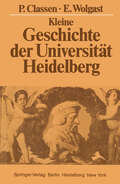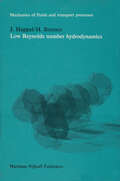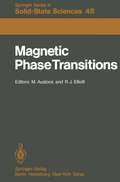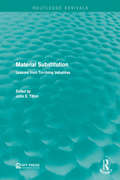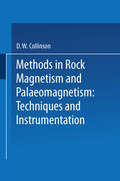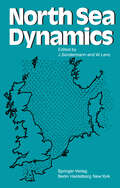- Table View
- List View
Logistic Support of a Manned Underwater Production Complex
by M. JonesThe support of subsea oil and gas production operations involves the use of many underwater work systems. Divers can be used for support tasks in water depths to 300 m, but at more extreme depths operations become restrictively expensive and the efficiency of task performance is reduced. Remote controlled unmanned vehicles can replace the diver to a limited extent, performing inspection and maintenance tasks and supporting drilling opera tions. Operations in deepwaters performed by remote controlled vehicles and one man submersible vehicles, such as JIM and WASP, are more cost effective than the use of divers. The areas of operation of the more complex multi-manned submersibles and bells are today generally restricted to their use for diver lock-out operations, manned intervention to subsea enclosures and the deployment of other underwater work systems. Oil and gas exploration activity is being undertaken in progres sively deeper waters. In the North Sea, Shell have discovered a large gas accumulation off the Norwegian coast in 323 m water depth and B. P. have made oil finds West of the Shetlands in 500 m and West of Eire in 450 m. Exploration drilling is today being carried out in many areas of the world in water depths greater than 1000 m, i. e. Western Mediterranean, Offshore Argentina, Offshore Western Australia and in the Niger Basin, West Africa. The existing discoveries of Shell and B. P.
Low Reynolds number hydrodynamics: with special applications to particulate media (Mechanics of Fluids and Transport Processes #1)
by J. Happel H. BrennerOne studying the motion of fluids relative to particulate systems is soon impressed by the dichotomy which exists between books covering theoretical and practical aspects. Classical hydrodynamics is largely concerned with perfect fluids which unfortunately exert no forces on the particles past which they move. Practical approaches to subjects like fluidization, sedimentation, and flow through porous media abound in much useful but uncorrelated empirical information. The present book represents an attempt to bridge this gap by providing at least the beginnings of a rational approach to fluid particle dynamics, based on first principles. From the pedagogic viewpoint it seems worthwhile to show that the Navier-Stokes equations, which form the basis of all systematic texts, can be employed for useful practical applications beyond the elementary problems of laminar flow in pipes and Stokes law for the motion of a single particle. Although a suspension may often be viewed as a continuum for practical purposes, it really consists of a discrete collection of particles immersed in an essentially continuous fluid. Consideration of the actual detailed boundary value problems posed by this viewpoint may serve to call attention to the limitation of idealizations which apply to the overall transport properties of a mixture of fluid and solid particles.
Magnetic Monopoles (Nato Science Series B: #102)
by Richard A. Carrigan W. Peter TrowerIn 1269 Petrus Peregrinus observed lines of force around a lodestone and noted that they were concentrated at two points which he designated as the north and south poles of the magnet. Subsequent observation has confirmed that all magnetic objects have paired regions of' opposite polarity, that is, all magnets are dipoles. It is easy to conceive of an isolated pole, which J.J. Thomson did in 1904 when he set his famous problem of the motion of an electron in the field of a magnetic charge. In 1931 P.A.M. Dirac solved this problem quantum mechanically and showed that the existence of a single magnet pole anywhere in the universe could explain the mystery of charge quantization. By late 1981, theoretical interest in monopoles had reached the point where a meeting was organized at the International Centre for Theoretical Physics in Trieste. Many mathematical properties of monopoles were discussed at length but there was only a solitary account describing experiments. This imbalance did not so much reflect the meeting's venue as it indicated the relative theoretical and experimental effort at that point.
Magnetic Phase Transitions: Proceedings of a Summer School at the Ettore Majorana Centre, Erice, Italy, 1–15 July, 1983 (Springer Series in Solid-State Sciences #48)
by R. J. Elliott M AusloosThe present volume contains the courses given at a Summer School on "Magne tic Phase Transitions" held at the Ettore Majorana Centre for Scientific Culture, at Erice (Trapani), Italy in July 1983 under the auspices of the Condensed Matter Division of the European Physical Society in their series on Materials Science and Technology. The student participants came from West Germany, Great Britain, Brazil, Greece, Switzerland, Sweden, Italy, USA and The Netherlands. The lecturers came from various European countries, Israel, USA and Canada. The atmosphere at the meeting was excellent and a good spirit of companion ship developed during two weeks of working together. The spread of interests among the lecturers and students was divers;jfied but balanced. The main lec turing contributions are reported in this volume. They represent up-to-date reviews in a pedagogical style. In addition, informal presentations on cur rent research interests were made which have not been included. The school attempted to summarize the current position on the properties of magnetic phase transitions from several points of view. The range and scope of the oretical techniques, and of particular aspects of materials or phenomena as observed experimentally were very well put forward by the lecturers. The grouping of manuscripts in chapters does not represent, however, the sched ule followed during the school. Contributions on mean-field approximations and renormalization-group methods either for static or dynamic phenomena can be found at various places in the following sections.
Material Substitution: Lessons from Tin-Using Industries (Routledge Revivals)
by John E. TiltonSubstitution has long been a common remedy for materials shortages. This study, originally published in 1983, uses tin to examine how and why substitution takes place. To provide insights into the tin industry and the practice of substitution, the case studies in this title examine three tin-using industries—beverage containers, solder, and tin chemical stabilisers. Overall, the contributors to this volume raise fundamental questions concerning the techniques for both short- and long-term forecasts of materials requirements in the industrial sector. This title will be of particular interest to students of Environmental Science.
Material Substitution: Lessons from Tin-Using Industries (Routledge Revivals)
by John E. TitltonSubstitution has long been a common remedy for materials shortages. This study, originally published in 1983, uses tin to examine how and why substitution takes place. To provide insights into the tin industry and the practice of substitution, the case studies in this title examine three tin-using industries—beverage containers, solder, and tin chemical stabilisers. Overall, the contributors to this volume raise fundamental questions concerning the techniques for both short- and long-term forecasts of materials requirements in the industrial sector. This title will be of particular interest to students of Environmental Science.
The Mathematics and Physics of Disordered Media: Percolation, Random Walk, Modeling,and Simulation. Proceedings of a Workshop held at the IMA, University of Minnesota, Minneapolis, February 13-19, 1983 (Lecture Notes in Mathematics #1035)
by B. D. Hughes B. W. NinhamMechanics of Sediment Transport
by A. Mueller B. Mutlu SumerThis book presents the studies on sediment transport in suspension and sediment transport in steep channels. It discusses the degradation and particle sorting processes.
Mechanics of Sediment Transport
by B. Mutlu SumerThis book presents the studies on sediment transport in suspension and sediment transport in steep channels. It discusses the degradation and particle sorting processes.
Mesoscale Meteorology - Theories, Observations and Models (Nato Science Series C: #114)
by D. K. Lilly Tzvi Gal-ChenProceedings of the NATO Advanced Study Institute, Bonas, France, July 13-31, 1982
Methods in Rock Magnetism and Palaeomagnetism: Techniques and instrumentation
by D. CollinsonDuring the last 30 years the study of the magnetic properties of rocks and minerals has substantially contributed to several fields of science. Perhaps the best known and most significant advances have resulted from the study of palaeomagnetism, which led to quantitative confirmation of continental drift and polar wandering through interpretation of the direction of remanent magnetism observed in rocks of different ages from different continents. Palaeomagnetism has also, through observations of reversals of magnetiz ation, ancient secular variation and ancient field intensities provided data relevant to the origin of the geomagnetic field, and other investigations have contributed significantly to large-scale and local geological studies, the dating of archaeological events and artefacts and more recently to lunar and meteoritic studies. Rock and mineral magnetism has proved to be an interesting study in its own right through the complex magnetic properties and interactions observed in the iron-titanium oxide and iron sulphide minerals, as well as contributing to our understanding of remanent magnetism and magnetization processes in rocks. Simultaneous with the development of these studies has been the develop ment of instruments and techniques for the wide range of investigations involved.
Mineral Deposits of the Alps and of the Alpine Epoch in Europe: Proceedings of the IV. ISMIDA Berchtesgaden, October 4–10, 1981 (Special Publication of the Society for Geology Applied to Mineral Deposits #3)
by H. J. SchneiderMineralogie: Eine Einführung in die spezielle Mineralogie, Petrologie und Lagerstättenkunde
by S. MatthesMinerals of California
by H. Earl PembertonIn 1866 William P. Blake, professor of mineralogy, geology and mining at the College of California, parent to the University of California, Berkeley, prepared as a report to the State Board of Agriculture an "Annotated Catalog of the Principal Mineral Species Hitherto Recognized in California and the adjoining States and Territories. " Seventy-seven mineral species appeared on the list. It was the beginning of a series that became known as Minerals of California. This first catalog was followed in 1884 and 1886 by a list of 135 species compiled by H. G. Hanks, the first state mineralogist of California, and pub· lished in the fourth and sixth State Mining Bureau reports. Then beginning in 1914 with a volume prepared by A. S. Eakle, professor of mineralogy at the Uni versity of California, Berkeley, the Division of Mines and Geology published new editions in the series at approximately ten-year intervals. Author Year Mineral Species A. S. Eakle 1914 352 A. S. Eakle 1923 417 A. Pabst 1938 446 J. Murdoch and R. W. Webb 1948 516 J. Murdoch and R. W. Webb 1956 523 J. Murdoch and R. W. Webb 1966 602 (For a more detailed review of the Minerals of California series, see I. Campbell, 1966, pp. 13-19. ) For over 100 years the series has served those who have a historic, scientific or economic interest in California minerals.
Mining Subsidence Engineering
by H. KratzschThis book originally appeared in German in 1974, under the title "Bergschadenkunde" (mining subsidence engineering), and then in Russian in 1978, published by Nedra of Moscow. When the German edition was almost out of print, Springer-Verlag decided to bring out a new edition, this time in English. For this English version the text has been thoroughly revised, enlarged, and sup plemented by over 100 new figures. The book deals with the current state of international knowl edge on strata and ground movement over mine workings, with its damaging effects on mine shafts and the land surface, and with measures for regulating mining damage in law and reducing it in practice. Discussion begins with the mine excavation underground - the cause - and ends with the damage to surface structure- the effect. Methods of roof control, including the subject of rock bursts, are not discussed, since that is a field concerned more with the safety of underground workings than with minimizing damage at the surface. Of the 500 literature references in the German edi tion, only the more important for an international readership have been retained, but no value judgement on the many pUblica tions not mentioned should be read into this. The book is principally intended as a working aid for the mine surveyor, the mining engineer, the architect, and the civil engineer. For the student and the post-graduate researcher, it of fers a summary and guide to this whole field of knowledge.
Nonlinear Methods of Spectral Analysis (Topics in Applied Physics #34)
by S. HaykinWith contributions by numerous experts
North Sea Dynamics
by Professor Dr. Jürgen Sündermann Diplom-Ozeanograph Walter LenzThis volume contains the proceedings of the International Sym posium on North Sea Dynamics which was held in Hamburg, August 31 - September 4, 1981. More than 150 participants from 10 coun tries were present at the Symposium. Of the 58 lectures given, 45 are printed in this book. The manuscripts were reviewed by an international advisory board. The main goal of the organizers was to bring together as many active researchers as possible in this very general field of North Sea dynarnics, transcending the boundaries of the countries and the various disciplines involved, in order to discuss the main problems and future trends. In the ten years since the last comparable meeting in Aviemore, Scotland, several large interna tional experiments (JONSDAP '73 and '76, JONSWAP '73, '75 and '77, MARSEN '79) and new developments in modelling promised a rewarding exchange of ideas. In addition to the physical disci plines, biologists and geologists are increasingly able to pre sent quantitative analyses.
The Northern Light: From Mythology to Space Research
by A. Brekke A. EgelandIn Nordic literature a remarkable discussion of the northern light appears in Kongespeilet (The King's Mirror) a thirteenth-century Norwegian chronicle. It is described in vivid detail as the following translated excerpts demonstrate: These northern lights have this peculiar nature, that the darker the night is, the brighter they seem, and they always appear at night but never by day, most frequently in the densest darkness and rarely by moonlight. In appearance they resemble a vast flame of fire viewed from a great distance. It also looks as if sharp points were shot from this flame up into the sky; these are of uneven height and in constant motion, now one, now another darting highest; and the light appears to blaze like a living flame. Three different theories for the origin of the northern light were suggested in this book. Numerous naturally occurring heavenly phenomena have been observed and enjoyed as long as the Earth has been inhabited, but hardly any of them has stirred man's imagination, curiosity and fear as much as the northern light. The northern light is certainly one of the most spectacular of nature's phenomena.
Oceanography: The Present and Future
by Peter G. BrewerOceanography: The Present and Future is the proceedings of a sym posium held at the Woods Hole Oceanographic Institution, Woods Hole, Massachusetts, on September 29-0ctober 2, 1980 on the occasion of the fiftieth anniversary of the founding of the Institution. The symposium was immediately preceded by the Third International Congress on the History of Oceanography, also held at Woods Hole, and the proceedings of that Congress, Oceanography: The Past, also published by Springer-Verlag, forms a companion volume to this book. The editorial responsibilities were handled by Ms. Kate Eldred, who worked extraordinarily hard on this volume, while the scientific editing was performed by Dr. Peter G. Brewer. The organizing committee of scientists charged with responsibility for the symposium was: Dr. Peter G. Brewer, chemistry; Dr. Arthur E. Maxwell, geology and geophysics; Dr. Robert W. Morse, marine policy; Dr. David A. Ross, marine policy and marine geology; Dr. Peter B. Rhines, physical oceanography; Dr. John A. Teal, marine biology; and Dr. Robert Spindel, ocean engineering. They were faced at the outset with the problem that science proceeds with intense effort and competition within a disciplinary peer group but that, particularly in ocean science, the results of this work often have com pletely unforseen and important consequences in a totally unrelated area.
Operation of Complex Water Systems: Operation, Planning and Analysis of Already Developed Water Systems (NATO Science Series E: #58)
by E. Guggino Giuseppe Rossi D. HendricksMost water systems in the industrial regions of the world are already developed. At the same time they are highly complex. This is true with respect to physical configuration, managment, operation, political goals, environmental interactions, etc. Thus the basic systems are already in place. This realization is the starting point for any new water developments and for operation. From this we conclude that whatever we do to meet new exigencies requires an understanding of the presently in-place complex water systems. Their operation is the important thing. And how can we adjust their operation to meet the new demands upon the system? This book deals with complex water systems and their operation. Some chapters are highly theoretical while others are rooted in practical applications. How can we an~lyze the operation of a complex water system and determine how its performance can be improved? Several chapters on mathematical analysis give approaches involving different aspects of this problem. But operation also has political, management, and physical aspects. These problems are addressed in chapters by managers who operate such systems. The main theme of all chapters is how to deal with the different aspects of a complex water system, already in place. We feel the book, in dealing with this question could be a start for new theoretical premises in water planning.
Orchids of Nigeria
by L.B. SegerbackThis text includes a description of 104 species with 195 photographs. It also contains a checklist of Nigerian orchids.
Orchids of Nigeria
by L.B. SegerbackThis text includes a description of 104 species with 195 photographs. It also contains a checklist of Nigerian orchids.
Palaeoclimatic Research and Models: Report and Proceedings of the Workshop held in Brussels, December 15–17, 1982
by A. GhaziPalaeoclimatology is presently experiencing a period of rapid growth of techniques and concepts. Studies of earth's past climates ryrovide excellent opportunities to examine the interactions between the atmosrhere, oceans, cryosphere and the land surfaces. Thus, there is a growing recognition of the need of close collaboration between palaeoclimatologists and the climate mode 11 ers. The workshop "Palaeoclimatic Research and Models (PRaM)" was organized by the Directorate General for Science, Research and Development within the framework of the Climatology Research Programme of the Commission of the European Communities (CEC). The aim of the workshop was to give to the members of the Contact Group "Climate Models" and "Reconstitution of Past Climates" of the CEC Climatology Research Program~e and to some invited scientists the opportunity to discuss problems of mutual interest. About 35 experts fr.om 10 countries took nart in the workshop. In general, palaeoclimatologists were asked to identify and discuss the data corresponding to the three topics as defined by the programme committee: 1) Abrupt Climate Changes 2) Initiation of Glaciation 3) Glaciated polar regions and their impact on global climate. Climate modellers were asked to give their views as to how these specific problems could be modelled, what use could be ~ade of the available palaeoclimatic data and which complementary data are needed for modelling.
Palaeomagnetism: Principles and Applications in Geology, Geophysics and Archaeology
by Donald H. TarlingPalaeomagnetism and archaeomagnetism are fascinating specialized studies because they are applicable to such a wide range of problems in geology, archaeology and geophysics. They can also be undertaken cheaply, when compared with most other geophysical techniques, and, at first sight, simply. In fact, real comprehension of the magnetic processes that have occurred in rocks and other types of material over several thousands or many millions of years is still extremely difficult to assess and measure. On this basis, this book cannot explain all such features, nor can it attempt to cover all the actual and potential applications of the method. All that can be attempted is to give an impression of the ways in which such techniques can be used in a wide variety of fields, and how these techniques are usually applied. The magnetization of rocks is, in fact, one of the earliest of the true sciences, but we are still not in a position to answer many of the problems posed. Consequently some of the examples given of applications are, essentially, state-of-the-art comments, rather than being a review as such. The changing position of the geomagnetic poles with time is still not adequately defined, for example, and some of the more recent conventional views are given, although the emphasis is placed on more subjective, probably more controversial, evaluations.
